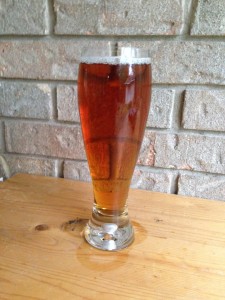Many brewers are excited about a new type of beer that originated last year (2017) in California — brut IPA. Brut IPA is a dry, fizzy beer with plenty of hop aromatics, but not as much bitterness as a typical American IPA. The first commercial example is attributed to Kim Sturdavant of San Francisco’s Social Kitchen and Brewery. The name “brut” is taken from the terminology used to rank sweetness in Champagne and other sparkling wines — brut is the driest category in that ranking (although it is sometimes subdivided into brut and extra brut).
Now, I’m sure some brewers are wondering if this beer is just a fad or if it is going to become an official beer style, and if so what will the style guidelines say about this beer? In addition, some will likely question if it should really be called an IPA given its comparatively low bitterness. I’m sure someone out in beer writing land would love to pontificate loudly on these questions, so I will leave that to them. Instead, I will address the much more practical question — how could a homebrewer brew a brut IPA at home? [Read more…]



Recent Comments